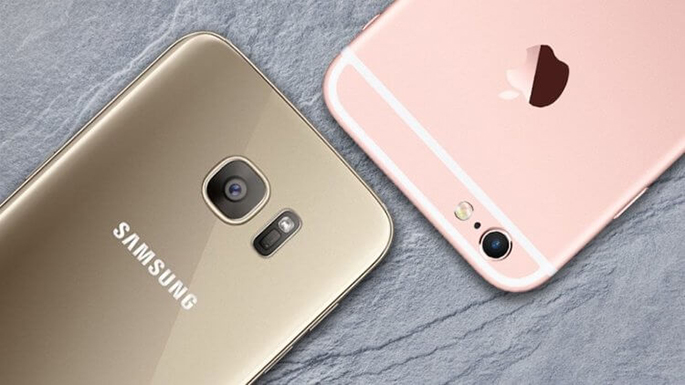Samsung and Apple manage to grow as global smartphone shipments slump for the third quarter in a row

In Q1 2022, global smartphone shipments dropped to 314 million units. This is an 11% decline compared to the same period of 2021. Shipment volumes have been decreasing for the third consecutive quarter due to the ongoing shortage of components all over the planet. Despite this problem, Samsung is still the global leader, with Apple and Xiaomi in the next positions. In the last quarter, the company has managed to set a record with the largest global smartphone market share in the last five years.
At the same time, consumer demand continues to drop due to several reasons that coincided at once – Covid-19 disruption in Chinese factories, complicated geopolitical conditions and unfavorable economic environment. The global smartphone market has, in fact, dropped by 7% year-to-year. Shipments totaled 328 million units in Q1 2022.
Even though Samsung’s shipments totaled 74.5 million in Q3 2021, it experienced a 2.7% decline. The company’s share was an impressive 23.8%, a record for Samsung since 2017. It’s one of the two top brands of smartphones that is inching towards its pre-pandemic results. The driver of the success Samsung has managed to achieve is considered to be the great customer reception of the new Galaxy S22.
The second place is taken by Apple, with a global market share of 18.2%. 57 million iPhones were shipped in Q1, marking a 1% growth year-on-year. This is Apple’s largest market share since 2013, likely driven by the impressive demand for iPhone13 and the release of iPhone SE (2022) with 5G capabilities.
Apple’s quarterly numbers, however, are down 28% because of typical seasonal dynamics.
Neither Samsung nor Apple had to deal with a significant overall decrease. On the other hand, Chinese manufacturers like Oppo, Vivo and Xiaomi, however, experienced a major blow, with the home market decline being the main reason.
Xiaomi’s share declined from 14% to 12% year-on-year, with 39 million phones shipped in Q1 2022. Geopolitical problems and a sluggish Asian market are quoted as the reasons. In addition, the questionable reception of Redmi Note 10S and Redmi 9A and chip shortages contributed to the decline. The volume of Xiaomi’s shipments was down 20%.
Oppo and Vivo are also dealing with a drop in their shipments. Vivo captured 8% of the global market, while Oppo has a 10% share. The shipment volume dropped 19% for both companies. Oppo’s shipments were down to 31 million and Vivo’s – to 28.6 million units.
Huawei’s offspring Honor became a powerful competitor in the global market, with 148% growth year-to-year. It shipped 16 million units in Q1, and showed a 7% quarter-on-quarter shipment growth. Its market share grew to 5% in Q1, up 1% from the previous quarter, and 3% from the same quarter of 2021.
In Q1 2022, Realme’s shipments also showed positive 13% growth to 14.5 million phones. A subsidiary of BBK Electronics, it has expanded significantly all over the world in this quarter. Its shipments that originate in Europe grew 163% year-on-year, but global shipments slumped 30% quarter on quarter. Realme is the one and only brand among the top 5 in the Indian market to show a rise year-on-year, specifically, a 40% increase in Q1.
Another player that’s continuing to demonstrate growth is Transsion Holdings (Infinix, Itel and Tecno). Its 23% annual rise is largely explained by the success of Infinix. Its 76% year-on-year and 4% quarter-on-quarter growth was driven by a rise in shipments in India, and other Asia Pacific, African and Middle Eastern markets.
Tecno's shipped 28% more year-on-year, but Itel’s numbers dipped 4%.
Expert forecasts claim that global smartphone shipments are set for a slight decline this year, and are expected to decrease by up to 2%.
Source